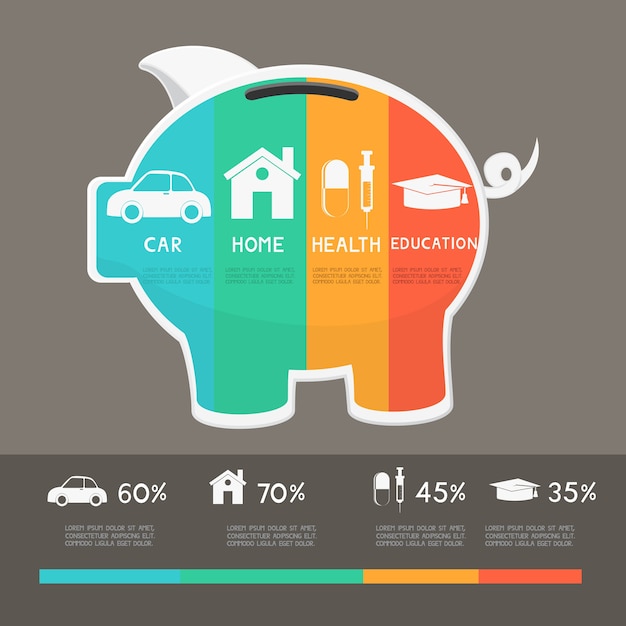Navigating Child Care Assistance Programs: A 2025 Guide for US Families

Child Care Assistance Programs (CCAP) in the US aim to help low-income families afford quality childcare by providing financial assistance and resources; understanding eligibility, application processes, and program changes is crucial for accessing needed support in 2025.
Finding affordable and quality childcare is a significant challenge for many families in the United States. Child Care Assistance Programs: Finding and Affording Quality Childcare in 2025 will explore the resources available to help families navigate this complex landscape.
Understanding Child Care Assistance Programs in the US
Child Care Assistance Programs (CCAPs) are designed to ease the financial burden of childcare for eligible families. These programs provide subsidies or financial assistance to help parents afford quality childcare services, enabling them to work or attend educational programs.
CCAPs vary by state, each with its own eligibility criteria, application processes, and benefit levels. Understanding the basics of these programs is the first step in accessing the support needed to ensure your children receive quality care.
Who is Eligible for Child Care Assistance?
Eligibility for CCAPs is primarily based on income and family size. Most programs target low-income families, with specific income thresholds varying by state. Parents must also be employed or participating in education or training programs.
Other eligibility factors may include residency requirements, citizenship status, and the age of the child needing care. Some states also prioritize certain groups, such as single parents or families with special needs children.
Key Requirements for Applying
The application process for CCAPs can be extensive, often requiring documentation such as proof of income, employment verification, and child’s birth certificate. Accurate and complete information is crucial for a successful application.
Many states require parents to choose from a list of approved childcare providers. These providers must meet certain standards for health, safety, and quality of care. Parents should thoroughly research their options to ensure they find a provider that meets their child’s needs.
- Income verification documents
- Proof of employment or educational enrollment
- Child’s birth certificate or other identification
- Residency verification
In summary, Child Care Assistance Programs are vital resources for low-income families, providing essential support for childcare costs. Understanding the eligibility criteria and application requirements is crucial for accessing these programs and ensuring children receive quality care.

Navigating the Application Process for CCAP
Applying for Child Care Assistance Programs can seem daunting, but breaking down the process into manageable steps can help. From gathering necessary documents to understanding the approval timeline, preparation is key.
Each state’s application process may differ slightly, but the general steps remain consistent. This section outlines key considerations and tips to navigate the application process smoothly.
Step-by-Step Application Guide
The initial step typically involves contacting your local Child Care Resource and Referral (CCR&R) agency. These agencies provide information about available programs, eligibility requirements, and application assistance. Many offer online resources and workshops to guide you through the process.
Once you understand the requirements, gather all necessary documents, including proof of income, employment verification, and your child’s birth certificate. Complete the application form accurately and submit it to the designated agency. Keep a copy of all documents for your records.
Common Pitfalls to Avoid
One common mistake is submitting incomplete or inaccurate information. This can significantly delay the processing of your application. Double-check all details and ensure you have included all required documents.
Another pitfall is failing to respond promptly to requests for additional information from the agency. Regularly check your mail and email for updates and respond promptly to any requests to avoid delays. It’s also important to understand the appeal process if your application is denied.
- Contact your local CCR&R agency
- Gather all required documents
- Complete the application accurately
- Follow up on your application status
In conclusion, navigating the application process for Child Care Assistance Programs requires careful preparation and attention to detail. By understanding the steps involved and avoiding common pitfalls, families can increase their chances of a successful application.
Understanding Income Thresholds and Eligibility Criteria
Income thresholds are a critical factor in determining eligibility for Child Care Assistance Programs. These thresholds vary by state and are often based on the Federal Poverty Level (FPL). Understanding how these thresholds are calculated and what income is considered can help families determine their eligibility.
Beyond income, there are other eligibility criteria that applicants must meet. This section delves into the specific requirements and how they impact access to childcare assistance.
Income Calculation Methods
States use various methods to calculate income for CCAP eligibility. Some consider gross income, while others use adjusted gross income. Understanding which method your state uses is crucial for accurately assessing your eligibility.
Additionally, some states may have deductions for certain expenses, such as childcare costs, medical expenses, or child support payments. Be sure to inquire about these deductions when applying.
Additional Eligibility Factors
In addition to income, most programs require parents to be employed or participating in an education or training program. The number of hours worked or enrolled may also be a factor.
Residency requirements are also common, with applicants typically required to reside in the state where they are applying. Citizenship or legal immigration status may also be a requirement.

- Verify income calculation methods in your state
- Understand work or education requirements
- Confirm residency and citizenship requirements
- Explore potential deductions and exemptions
In summary, understanding income thresholds and other eligibility criteria is essential for determining your eligibility for Child Care Assistance Programs. By familiarizing yourself with these requirements, you can better prepare your application and increase your chances of approval.
Exploring State-Specific CCAP Variations
Child Care Assistance Programs are administered at the state level, leading to significant variations in program design, eligibility criteria, and benefit levels. Understanding these state-specific differences is vital for accessing the appropriate support.
From application processes to provider requirements, this section highlights key variations across different states, providing insights into navigating your local CCAP effectively.
Application and Documentation Differences
Application processes vary significantly from state to state. Some states offer online applications, while others require in-person submissions. The required documentation can also differ.
For instance, some states may require detailed employment verification, while others focus more on income documentation. Knowing these specific requirements can streamline your application process.
Provider Requirements and Choices
States also differ in their requirements for childcare providers. Some states require providers to be licensed or accredited, while others have less stringent standards. Parents may have more choices in some states than others.
Additionally, the reimbursement rates for providers can vary, affecting the availability of quality childcare options. It’s essential to research the approved providers in your area and understand their qualifications.
- Research online application options in your state
- Understand provider licensing requirements
- Explore reimbursement rates for providers
- Contact your local CCR&R for state-specific information
In conclusion, exploring state-specific CCAP variations is crucial for maximizing the benefits available to your family. By understanding the nuances of your local program, you can navigate the application process more effectively and access the support you need.
Maximizing Benefits and Finding Quality Childcare Providers
Once approved for Child Care Assistance Programs, maximizing the benefits and finding quality childcare providers become the primary focus. Understanding how to utilize your benefits effectively and identifying the right provider for your child are essential for long-term success.
This section provides strategies for maximizing your CCAP benefits and offers tips for finding and evaluating potential childcare providers.
Utilizing CCAP Benefits Effectively
Familiarize yourself with the specific rules and regulations of your CCAP. Understand how often benefits are paid, what expenses are covered, and what documentation is required to maintain eligibility.
Regularly communicate with your childcare provider and the CCAP agency to ensure all payments are processed correctly and on time. Keep accurate records of all childcare expenses and payments to avoid any discrepancies.
Evaluating Childcare Providers
When selecting a childcare provider, consider factors such as the provider’s experience, qualifications, and accreditation. Visit the facility and observe the interactions between staff and children.
Check for safety certifications and ensure the facility meets all health and safety standards. Read reviews and ask for references from other parents. Trust your instincts and choose a provider that you feel confident will provide a safe and nurturing environment for your child.
- Communicate regularly with your provider and CCAP agency
- Keep accurate records of expenses and payments
- Check provider qualifications and certifications
- Visit the facility and observe staff interactions
In summary, maximizing benefits and finding quality childcare providers are crucial steps in ensuring your child receives the best possible care. By utilizing your CCAP benefits effectively and carefully evaluating potential providers, you can create a supportive and enriching environment for your child’s development.
Future Trends in Child Care Assistance Programs: What to Expect in 2025
The landscape of Child Care Assistance Programs is constantly evolving, influenced by economic factors, policy changes, and societal needs. Understanding future trends can help families anticipate changes and plan accordingly.
This section explores potential developments in CCAPs, including funding levels, eligibility criteria, and program innovations, providing insights into what to expect in 2025.
Potential Funding Changes
Funding levels for CCAPs are subject to change based on government budgets and priorities. Monitor legislative developments and advocacy efforts related to childcare funding to stay informed about potential changes.
Increased funding could lead to expanded eligibility criteria and higher benefit levels. Conversely, funding cuts could result in stricter eligibility requirements and reduced benefits.
Program Innovations and Reforms
Many states are exploring innovative approaches to improve the effectiveness and accessibility of CCAPs. These may include streamlining the application process, offering flexible payment options, and expanding access to high-quality childcare providers.
Technological advancements, such as online portals and mobile apps, could also play a role in simplifying the CCAP experience. Stay informed about these developments in your state to take advantage of new opportunities.
- Monitor legislative developments in childcare funding
- Stay informed about program innovations in your state
- Explore technological advancements in CCAPs
- Advocate for policies that support affordable childcare
In conclusion, staying informed about future trends in Child Care Assistance Programs is essential for families seeking to access and maximize these vital resources. By anticipating changes and advocating for supportive policies, you can ensure your child receives the care they need to thrive.
| Key Point | Brief Description |
|---|---|
| 💰 Eligibility | Income-based; varies by state and family size. |
| 📝 Application | Requires income proof, employment verification. |
| 🏫 Providers | Must meet state standards for quality and safety. |
| 📈 Future | Potential funding and policy shifts in 2025. |
Frequently Asked Questions
▼
The CCDF is a federal program that provides funding to states to assist low-income families with childcare costs, allowing parents to work or attend training/education programs.
▼
You can find your local CCR&R agency by visiting the Child Care Aware of America website or calling their helpline. They can provide information and resources specific to your area.
▼
CCAPs generally cover expenses for licensed daycare centers, family childcare homes, and after-school programs. Some programs may also cover transportation costs.
▼
Eligibility renewal requirements vary by state, but typically you must renew your eligibility every 6 to 12 months. You’ll need to provide updated documentation.
▼
You’re generally required to report any changes in income to your CCAP agency promptly. Changes in income may affect your eligibility or benefit level.
Conclusion
Navigating the world of child care assistance programs can be complex, but with the right information and resources, families can find affordable and quality childcare solutions in 2025. Understanding eligibility, application processes, and future trends is key to securing the support needed to ensure children thrive while parents work or pursue educational opportunities.
